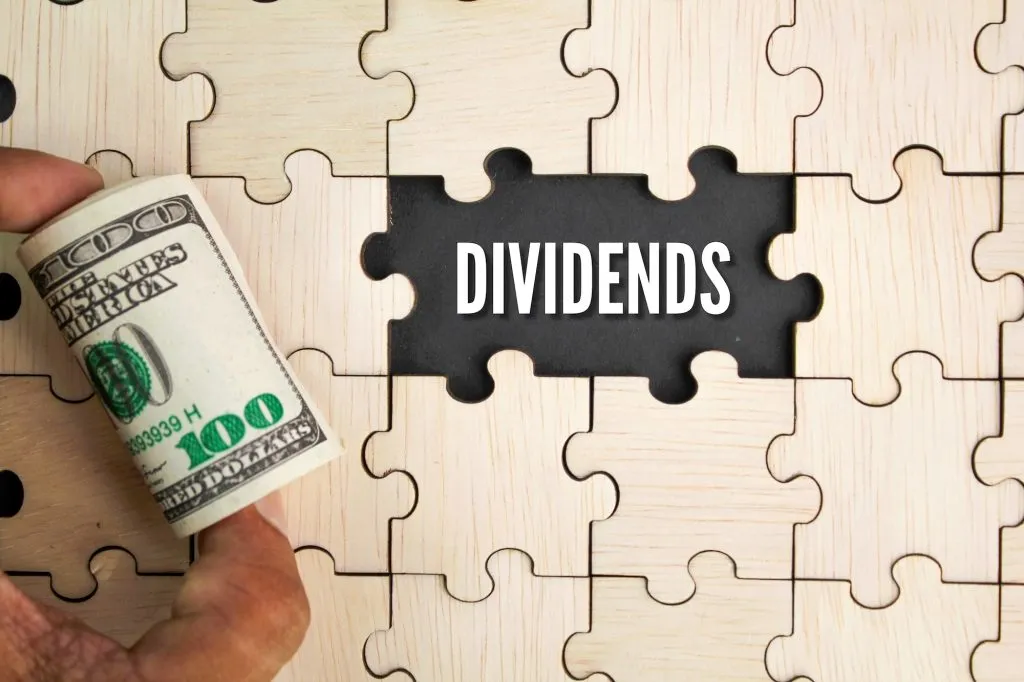Have you ever wondered how some investors earn a steady stream of income without selling their stocks? That’s the power of dividends. By building a dividend portfolio, you can create a passive income stream that grows over time.
Whether you want extra income for retirement, financial independence, or just a steady cash flow, a dividend portfolio can be a powerful tool.
In this guide, you’ll learn exactly how to build a dividend portfolio step by step. Whether you’re new to investing or looking to optimize your current strategy, this guide will help you choose the right stocks, diversify your investments, and maximize your returns.
Step 1: Understand the Basics of Dividend Investing
Before you start building a dividend portfolio, you need to understand how dividends work. Dividends are payments companies make to their shareholders, usually on a quarterly basis. These payments come from the company’s profits and reward investors for holding the stock.
Why Invest in Dividend Stocks?
- Passive Income – You earn money just by holding the stocks.
- Compounding Growth – Reinvesting dividends helps your wealth grow faster.
- Stability – Many dividend-paying stocks belong to established, financially strong companies.
- Inflation Protection – Companies that increase dividends over time can help you maintain purchasing power.
Key Dividend Terms to Know
- Dividend Yield – The annual dividend payment divided by the stock’s price, expressed as a percentage. A higher yield isn’t always better; balance yield with sustainability.
- Payout Ratio – The percentage of earnings a company pays as dividends. A lower ratio (under 60%) suggests dividends are sustainable.
- Dividend Growth Rate – How much a company’s dividend has grown over time. A higher growth rate signals long-term potential.
- Ex-Dividend Date – The date you must own a stock to receive the next dividend payment. Buying after this date means you won’t receive the next payout.
Not all dividends are created equal. Some companies offer high-yield dividends, while others focus on dividend growth. You need to decide which strategy aligns with your financial goals.
Step 2: Choose the Right Dividend Stocks
Selecting the right stocks is crucial when building a dividend portfolio. Here’s how to find the best options:

1. Look for Companies with a Strong Dividend History
Reliable dividend stocks have a history of stable or growing payments. Some categories to consider:
- Dividend Aristocrats – S&P 500 companies that have increased dividends for at least 25 years.
- Dividend Kings – Companies with 50+ years of dividend growth.
- Blue-Chip Stocks – Large, well-established companies known for stability.
2. Assess Financial Health
- Revenue and Earnings Growth – Companies with rising profits are more likely to sustain dividends.
- Debt Levels – High debt can make dividends risky. Check the debt-to-equity ratio.
- Cash Flow – Strong free cash flow ensures companies can afford dividends.
3. Balance Dividend Yield and Growth
A high dividend yield may look attractive, but it could signal financial trouble. Instead, aim for a balance:
- High Yield (4-7%) – Offers immediate income but may carry risk.
- Moderate Yield (2-4%) with Growth – More sustainable, with steady increases over time.
Step 3: Diversify Your Dividend Portfolio
A well-diversified portfolio reduces risk and increases stability. When building a dividend portfolio, consider spreading your investments across different sectors.
Key Sectors for Dividend Stocks
- Consumer Staples – Companies like Procter & Gamble and Coca-Cola have strong, stable dividends.
- Healthcare – Johnson & Johnson and Pfizer offer steady dividends.
- Utilities – These companies provide consistent payouts due to stable demand.
- Financials – Banks and insurance companies often pay reliable dividends.
- Technology – While tech isn’t traditionally dividend-heavy, giants like Microsoft and Apple now offer dividends.
How to Allocate Your Portfolio
- Core Holdings (50-60%) – Established dividend payers with strong growth.
- Growth Dividend Stocks (20-30%) – Stocks with rising dividends but lower yields.
- High-Yield Stocks (10-20%) – Stocks that pay high dividends but may carry risk.
Avoid overloading your portfolio with just one sector. A diverse mix helps protect against downturns in specific industries.
Step 4: Reinvest and Monitor Your Portfolio
Once you’ve built your dividend portfolio, you need to manage it effectively.
Reinvest Your Dividends
Reinvesting your dividends through Dividend Reinvestment Plans (DRIPs) allows you to buy more shares automatically. This speeds up the power of compounding. Over time, even small dividends can turn into significant wealth.
Track Your Portfolio’s Performance
Check your stocks regularly to ensure they’re still strong investments. Look for:
- Dividend cuts or freezes – These could indicate financial trouble.
- Financial declines in the company – A declining business may not sustain dividends.
- Better opportunities elsewhere – If a stock underperforms, consider reallocating funds.
Rebalance When Needed
Over time, your portfolio might become unbalanced. Adjust your investments to maintain diversification and maximize returns. This may include:
- Selling underperforming stocks.
- Reallocating to sectors with stronger growth.
- Adding new high-quality dividend payers.
Conclusion
Building a dividend portfolio takes time, but it’s one of the best ways to create a steady passive income stream. By choosing strong dividend stocks, diversifying your investments, and reinvesting your earnings, you can watch your wealth grow over the years.
Are you ready to start your dividend investing journey? Drop a comment below and share your thoughts or questions!



